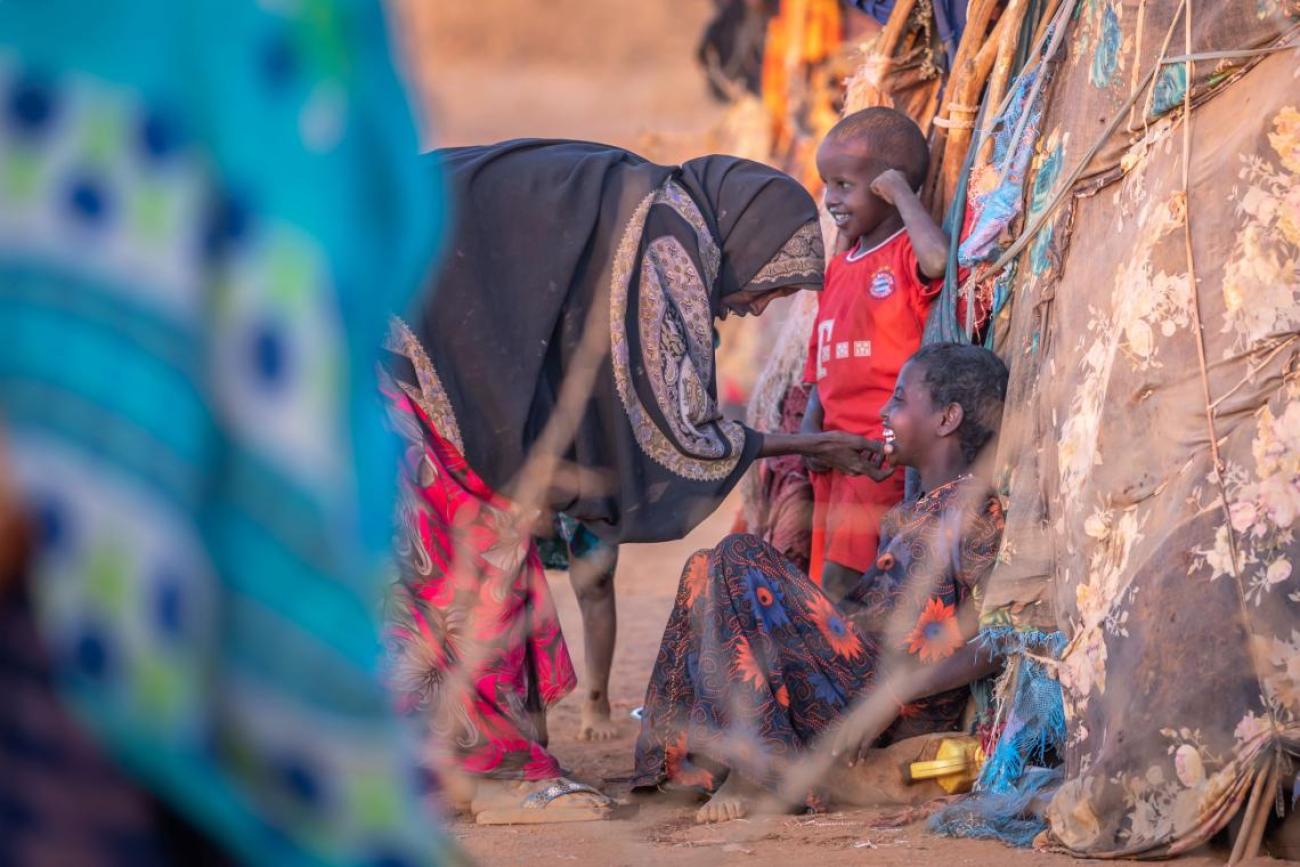The invisible children in climate crisis

As drought worsens in the Horn of Africa, children with a disability bear the heaviest burden.
“I have no friends to play with,” says Lina Nasir, 9, with her limited speaking ability. She is a child with a developmental disability, spending most of her time inside a makeshift shelter in Bul’ad camp, Hargele, Somali region, where the number of displaced families is constantly rising due to the severe drought.
A free-spirited Lina smiles every time she sees new faces and likes to interact. Yet, only few care to respond to her inviting eyes. Moreover, she faces epilepsy.
After losing many of their cattle to the drought, Lina’s family left the little village of Hulul seeking help. It is almost a year since they arrived in Hargele and the family is struggling to survive.
Every day at sunrise, Lina’s father, Nasir leaves his shelter to find work in Hargele town. If he is lucky, he would make some money fetching water for the town dwellers or working as a daily laborer at a construction site. But Halima, his wife, stays behind with the children. Both Lina and one of her sons Mohammed have disabilities.
“I am not like the other parents here. I have two children with disabilities. Mohammed is 6 and still unable to speak. And if I left Lina by herself, she may wander around and get hurt. Besides, she has epilepsy,” Halima adds.
A few weeks back, Lina was following a couple of children to a location where a man was teaching the alphabet under a dried tree. She was excited to be with children, but soon, they started mocking her appearance, and her left hand with physical disability. She was devastated.
“When kids bully her, she gets upset. That’s why I prefer to keep her at home. If she is sad, she loses her appetite and her episode of epilepsy hits. Sometimes, she asks questions that I cannot answer. That makes me feel bad.”
Lina is among the many children with disabilities in Bul’ad camp. Children affected by polio, those with hearing and visual impairments and other forms of disabilities, are left behind.
Five consecutive seasons of failed rainfall has pushed children and families in the Horn of Africa, including the Somali region of Ethiopia, to the brink of climate induced crisis. Communities have been forced to take extreme measures to survive, with thousands of children and families leaving their homes out of pure desperation in search of water, food, pasture, and treatment for sick children.
Without support, displaced families with children with disabilities are less equipped physically, mentally, and emotionally to cope with these extreme conditions. And children like Lina face the greatest risks of all. For this reason, UNICEF has considered a “disability top up” as part of the humanitarian cash transfer in order to address the additional needs of families with children with disabilities supported by CERF funding.
It is a grim reality a child with disability has come to terms with.
In Bul’ad camp, UNICEF, with support from the Bill and Melinda Gates Foundation, is providing cash transfers to people affected by the drought. The cash grant is intended to support families with their pressing needs.
“What we are providing here is cash support to help families improve their nutritional status. It is important that they have options to buy essentials depending on their needs. We also teach mothers about better child feeding practices,” says Utpal Moitra, UNICEF Chief of Somali Region Field Office. So far, more than 1,700 families have received a cash grant in the first round of support and priority is given to parents who have children with disabilities like Halima.
“I am so grateful for the support. I can now buy some food and clothing for my children. I will also buy some medication for Lina,” says Halima.
Lina wishes to see a world where she can play with other children. She is still too young to understand the climate crisis that is unfolding around her, yet she is living its worst consequences.


